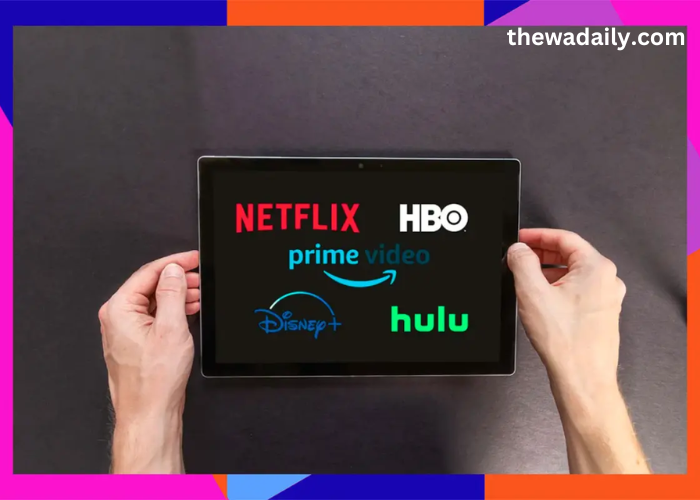In the past decade, the entertainment landscape has undergone a seismic shift. Traditional television and movie-watching habits have been revolutionized by the rise of streaming services, which have not only transformed how we consume content but also reshaped the entire entertainment industry. Leading this charge are giants like Netflix and Disney+, along with several other notable platforms. This evolution has brought about significant changes in content creation, distribution, and viewer engagement. Explore a wide range of movies and TV shows on SDMoviesPoint2. Stream or download your favorite content in high quality for an unparalleled viewing experience.
The Birth and Rise of Streaming
The concept of streaming services began to take shape in the mid-2000s, with Netflix leading the way. Initially a DVD rental service, Netflix introduced its streaming option in 2007, offering subscribers instant access to a library of movies and TV shows online. This innovation tapped into the growing desire for on-demand entertainment, allowing viewers to watch what they wanted, when they wanted, without the constraints of broadcast schedules or physical media.
Netflix’s early success paved the way for other companies to enter the market. Amazon Prime Video and Hulu soon followed, each bringing their own unique offerings and strategies. Amazon leveraged its vast ecosystem to bundle streaming with its Prime membership, while Hulu focused on providing access to recent TV episodes, catering to viewers who wanted to stay current with their favorite shows.
Disney+ and the Content Wars
The launch of Disney+ in November 2019 marked a significant milestone in the streaming wars. Leveraging its extensive catalog of beloved franchises, including Marvel, Star Wars, Pixar, and Disney classics, Disney+ quickly attracted millions of subscribers. This move underscored the importance of exclusive content in the streaming era. With the backing of one of the largest entertainment companies in the world, Disney+ set a new standard for what a streaming service could offer.
The success of Disney+ also intensified the competition among streaming services, leading to what many refer to as the “content wars.” Companies like Apple (with Apple TV+), WarnerMedia (with HBO Max), and NBCUniversal (with Peacock) entered the fray, each vying for a share of the burgeoning market. The result has been an unprecedented surge in content production, as each platform seeks to attract and retain subscribers through exclusive shows and movies.
Impact on Content Creation
The evolution of streaming services has profoundly impacted content creation. Traditional TV networks and movie studios have had to adapt to the new paradigm, often by creating their own streaming platforms or entering into partnerships with existing ones. The demand for original content has skyrocketed, leading to increased investment in production.
Streaming services have also changed the way stories are told. Freed from the constraints of traditional broadcast schedules, creators can experiment with different formats and storytelling techniques. Limited series, anthology shows, and unconventional episode lengths have become more common, allowing for greater creative flexibility. Additionally, the global reach of streaming platforms has enabled more diverse voices and stories to find an audience, contributing to a richer and more varied media landscape.
Changing Viewer Habits
The rise of streaming services has fundamentally altered viewer habits. Binge-watching, once a novelty, has become a mainstream activity. The ability to watch multiple episodes or entire seasons in one sitting has transformed how audiences engage with content. This shift has also influenced how shows are produced and released, with many streaming platforms opting to release entire seasons at once rather than following a weekly schedule.
Moreover, the convenience of streaming has led to the decline of traditional cable TV subscriptions. Cord-cutting has become increasingly popular as viewers seek more flexible and cost-effective options. This trend has forced cable providers to adapt, often by offering their own streaming services or bundling streaming options with traditional packages.
The Future of Streaming
As technology continues to evolve, the future of streaming services looks promising but also challenging. The market is becoming increasingly saturated, and competition for subscribers is fierce. Innovation will be key to staying ahead, whether through advancements in streaming technology, personalized content recommendations, or interactive viewing experiences.
Additionally, issues such as content licensing, regional restrictions, and the impact of piracy will need to be addressed. Streaming services will also have to navigate the balance between producing high-quality original content and managing production costs.
In conclusion, the evolution of streaming services has dramatically changed the entertainment industry. From the rise of Netflix to the emergence of Disney+ and beyond, these platforms have redefined how we consume media. As the industry continues to evolve, one thing is clear: streaming services are here to stay, and their impact will be felt for years to come.
